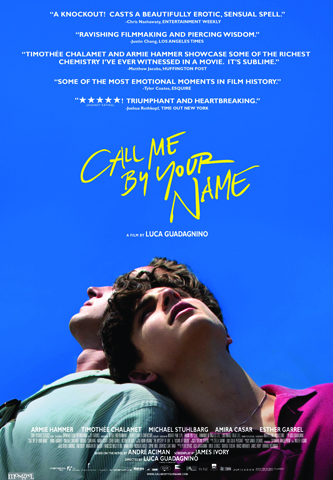Hypothesis: How have representations of LBGTQ characters on screen changed over time in coming of age films?
Films: Call me by your Name [Guadagnino, 2018],

Rebel Without a Cause [Ray, 1955]

Hypothesis: How have representations of LBGTQ characters on screen changed over time in coming of age films?
Films: Call me by your Name [Guadagnino, 2018],

Rebel Without a Cause [Ray, 1955]

| Title | Form | Harvard Reference | Link | Last Accessed |
| 1) | Film | Empire of the Sun. (1987). [Film] America: Warner Bros. | Empire of the Sun (Spielberg, 1987) | N/A |
| 2) | Film | Grave of the Fireflies. (1988). [Film] Japan: Toho Co., Ltd. | Grave of the Fireflies (Takahata, 1988) | N/A |
| 3 | Book | Dixon, M. (2020). Media theory for A level the essential revision guide. London New York Routledge Taylor & Francis Group. | Media Theory for A Level | N/A |
| 4) | Article | Ballard, J.G. (2006). JG Ballard looks back at Empire. The Guardian. [online] 4 Mar. Available at: https://www.theguardian.com/books/2006/mar/04/fiction.film. | https://www.theguardian.com/books/2006/mar/04/fiction.film | 14/03/2023 |
| 5) | Book | Hall, S., Hobson, D., Lowe, A. and Willis, P. (2003). Culture, Media, Language. Routledge. | https://www.taylorfrancis.com/chapters/edit/10.4324/9780203381182-18/encoding-decoding-stuart-hall | N/A |
| 6) | Article | Dinning, R. (2019). The WW2 obsession: why the world can’t move on from 1945. [online] HistoryExtra. Available at: https://www.historyextra.com/period/second-world-war/why-cant-we-escape-the-grip-of-the-second-world-war-two-obsession/. | https://www.historyextra.com/period/second-world-war/why-cant-we-escape-the-grip-of-the-second-world-war-two-obsession/ | 24/05/2022 |
| 7) | Article | Macinnes, D.T. (2011). Ghibli Blog: Studio Ghibli, Animation and the Movies: Animerica Interviews Isao Takahata and Akiyuki Nosaka. [online] Ghibli Blog. Available at: http://ghiblicon.blogspot.com/2011/04/animerica-interviews-isao-takahata-and.html. | http://ghiblicon.blogspot.com/2011/04/animerica-interviews-isao-takahata-and.html | 14/03/2023 |
| 8) | Article | Langworth, R.M. (2017). https://richardlangworth.com/optimist-and-pessimists-churchill-quote. [online] Richard M. Langworth. Available at: https://richardlangworth.com/optimist-pessimists [Accessed 14 Mar. 2023]. | https://richardlangworth.com/optimist-pessimists | 14/03/2023 |
| 9) | Book | Motohisa Yamakage, Paul De Leeuw and Aidan Rankin (2012). The essence of Shinto : Japan’s spiritual heart. New York: Kodansha Usa. | https://archive.org/details/theessenceofshintomotohisayamakage/page/n231/mode/2up?q=imperial | 14/03/2023 |
| 10) |
How are women represented in Period Drama from different cultures?

![Little Women - Greta Gerwig [DVD] - Golden Discs](https://cdn.shopify.com/s/files/1/2036/5517/products/81jfAOHqaPL._AC_SL1500_2000x.jpg?v=1604421016)
American Cinema/American Culture, John Belton:
Belton writes, “film noir grapples, as Robert Porfirio suggests, with existential issues such as the futility of individual action; the alienation, loneliness, and isolation of the individual in industrialized, mass society; the problematic choice between being and nothingness; the absurdity, meaninglessness, and purposelessness of life; and the arbitrariness of social justice, which results in individual despair, leading to chaos, violence, and paranoia.”
Camera:
Narrative:
Camera:
Narrative:
References:
JMR – Defining Film noir
Britannica – Characteristics of film noir
Taste of Cinema – Reasons why sin city is a neo-noir classic
A level film fact sheet (WJEC) – Lady from Shanghai
Ben – How have representations of mental illness on film changed over time using the films Lust For Life (Minelli 1956) and A Beautiful Mind ( Howard, 2001)?
Molly – How do the films Guns of Navarone (1961) and Dunkirk (2017) demonstrate how the war genre has changed over time?
Hannah – How have narrative interpretations of Joseph Campbell’s monomyth changed over time using the films Kubo and the Two Strings and The Hidden Fortress?
Kirsty – How have representations of women in the Coming of Age Genre changed over time using the the films Rebel Without a Cause and Ladybird?
Cameron – How are children represented in war films from different cultures. Using the films Grave of the Fireflies (1988, Japan) and Empire of the Sun (1987, USA)
Matilde – How have representations of LBGTQ characters on screen changed over time? Using the films Call me by your Name 2018 Rebel Without a Cause 1955
Luke – How has the Film Noir subgenre changed over time using the films Sin City Frank Miller, Robert Rodriguez (2005) and Lady from Shanghai (Welles, 1947)
Misty – How are the social underclass represented in different cultures using the films La Haine Kassovitz (1995) Slumdog Millionaire Boyle 2008
Phoebe – How the folk horror sub genre has changed over time using the films Midsommer (Aster, 2019) and The Wicker Man ( Hardy,1973)
Ruby- how are women represented in Period Drama from different cultures (Feminism) using the films Portrait of a Lady on Fire (France, 2019) Little Women (2019, US) ?
Jack – How has female representation in horror films changed over time? Using the films Friday the 13TH Part 2 1981 (Miner,US) and The Cabin in the Woods 2011 (Goddard, US) ?
Bryna- To what extent can films be said to offer an insight into the collective unconscious of their times? Using the films Fight Club and US.
Kai- How have techniques of montage evolved over time? Using the films Strike (Eisenstein,1925 USSR) and Dunkirk (Nolan ,2017 US)
Tom – How does the Serial Killer SubGenre change when applied to different cultural contexts? Using the films Zodiac (Fincher 2007 US ) Memories of Murder (Bong Joon Ho 2004 Korea)
Liberty – How does the social thriller genre differ across cultures using Parasite (South Korea, 2019) and Get Out (US, 2017)?
Olivia- How is the male gaze used in the films Vertigo (1958, Hitchcock,1958 US) and Basic Instinct ( Verhoeven,1992 US)?